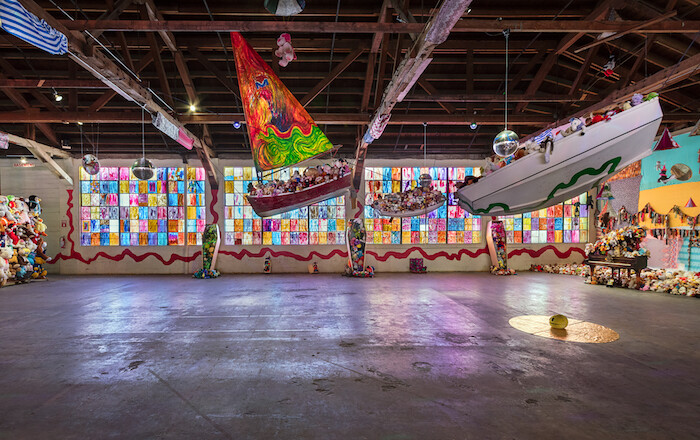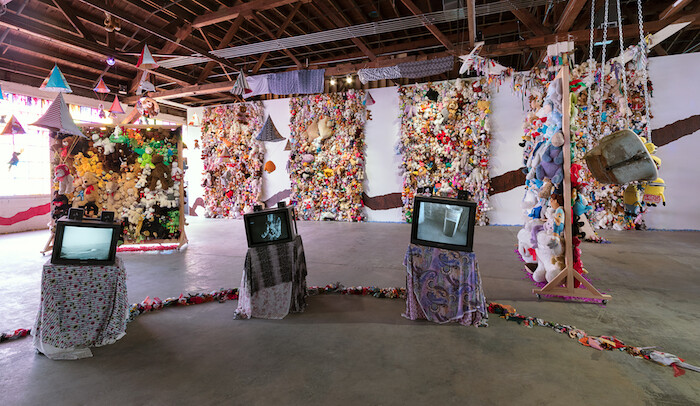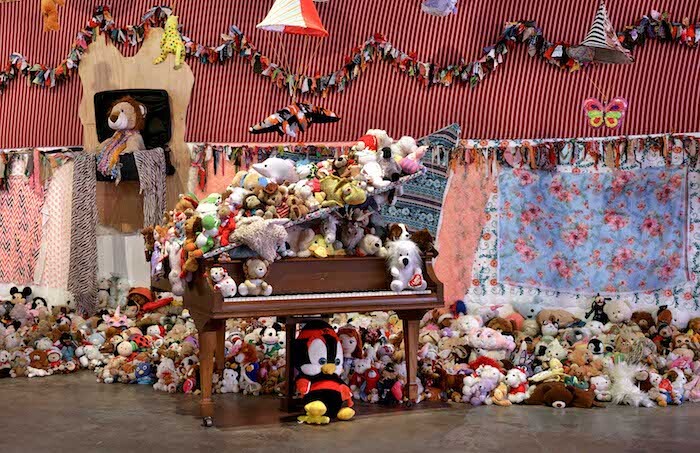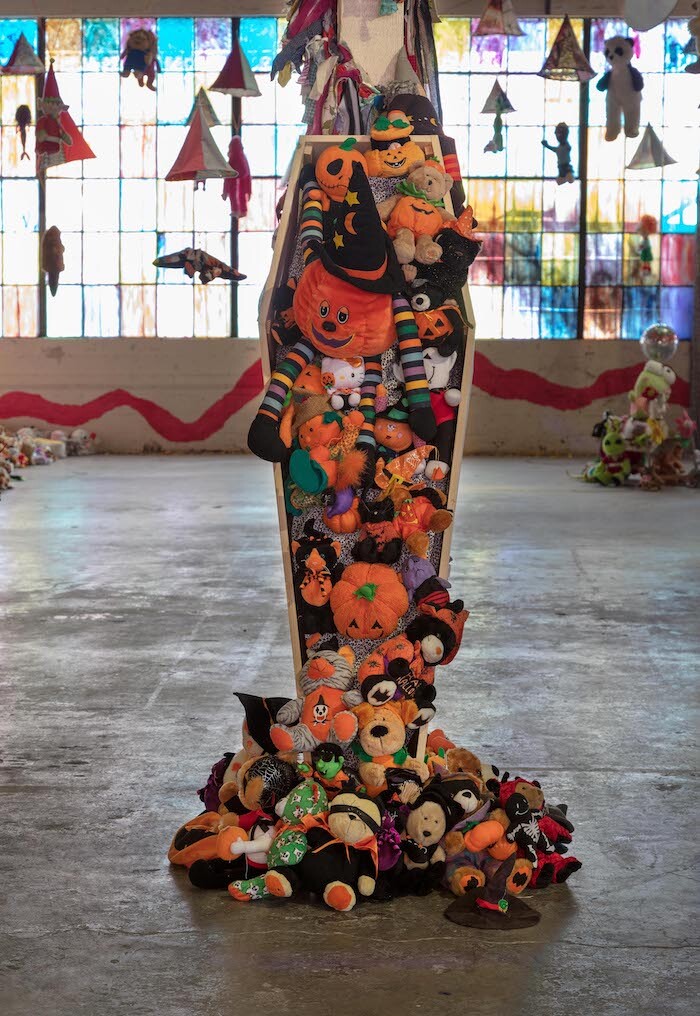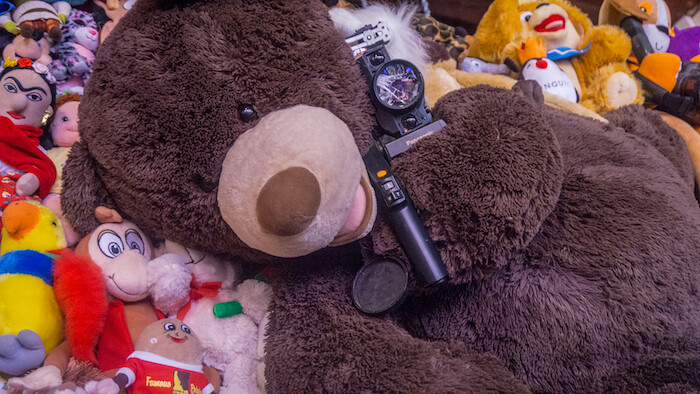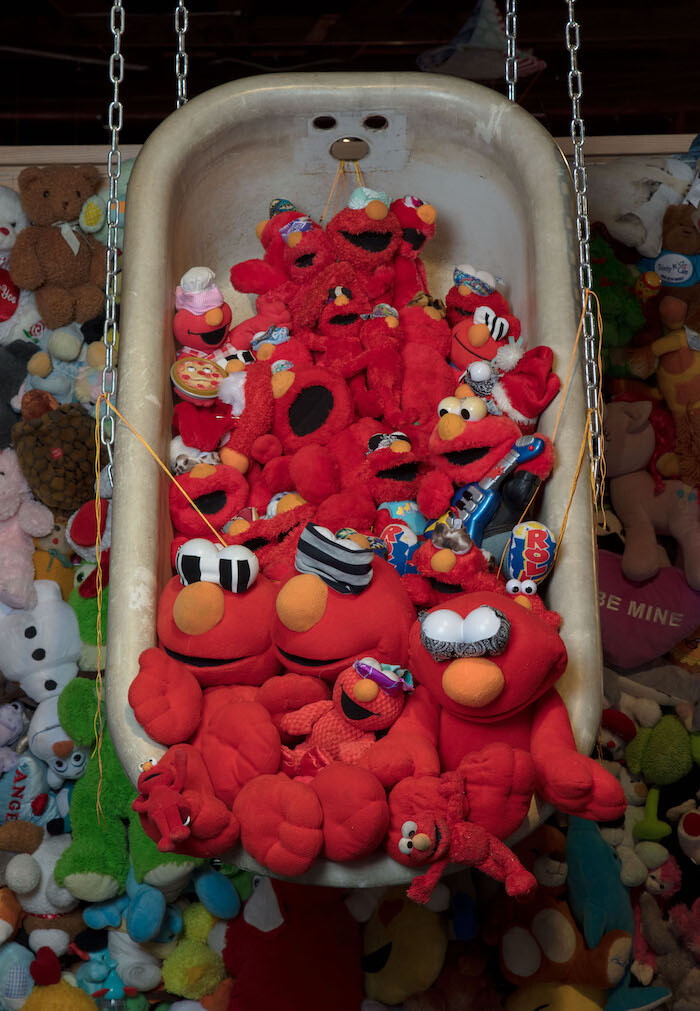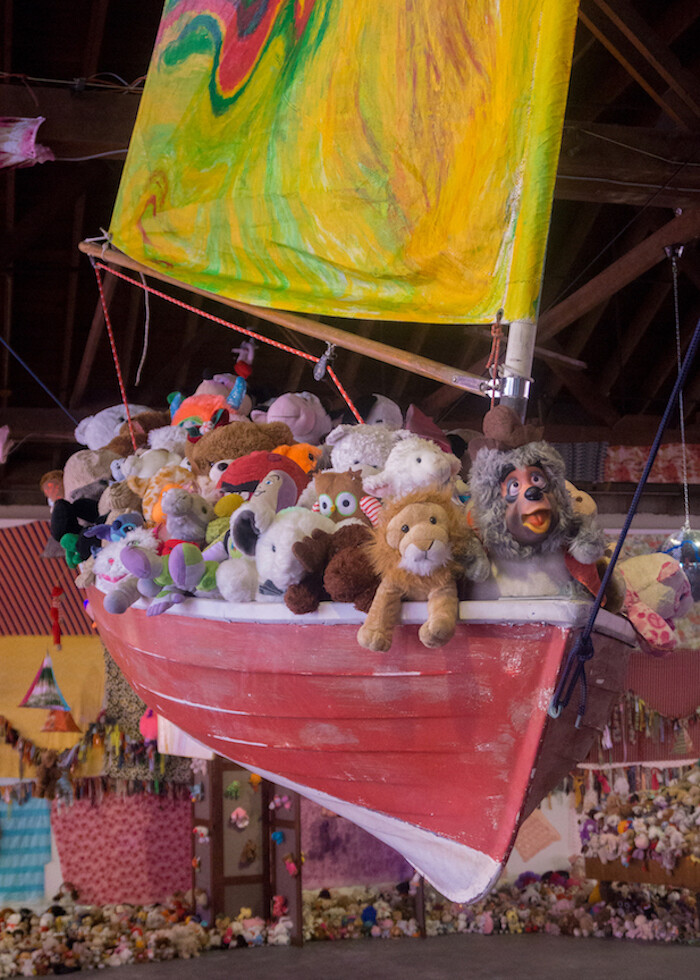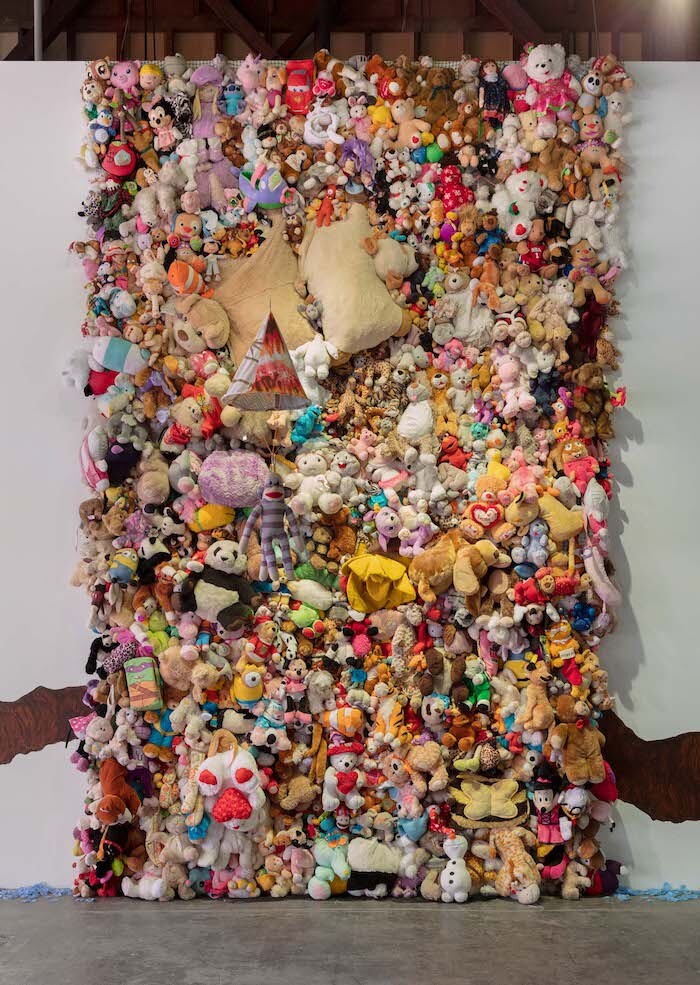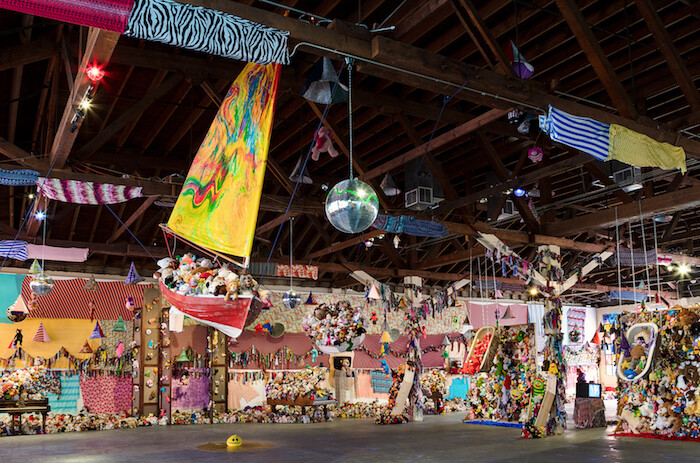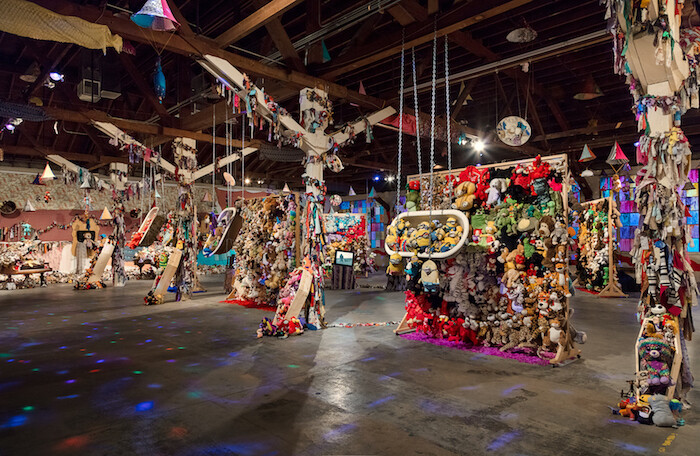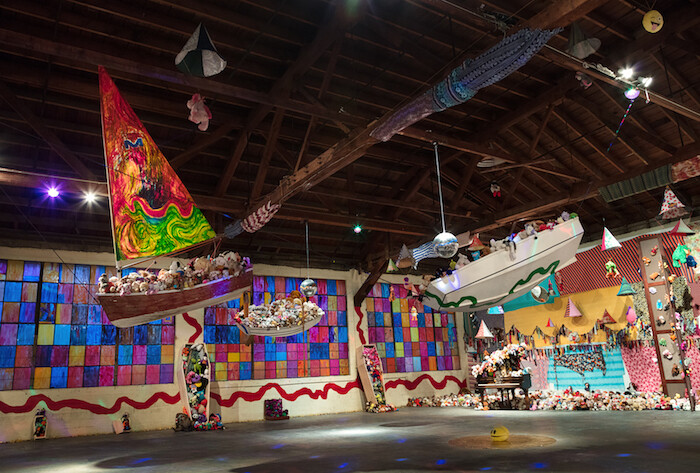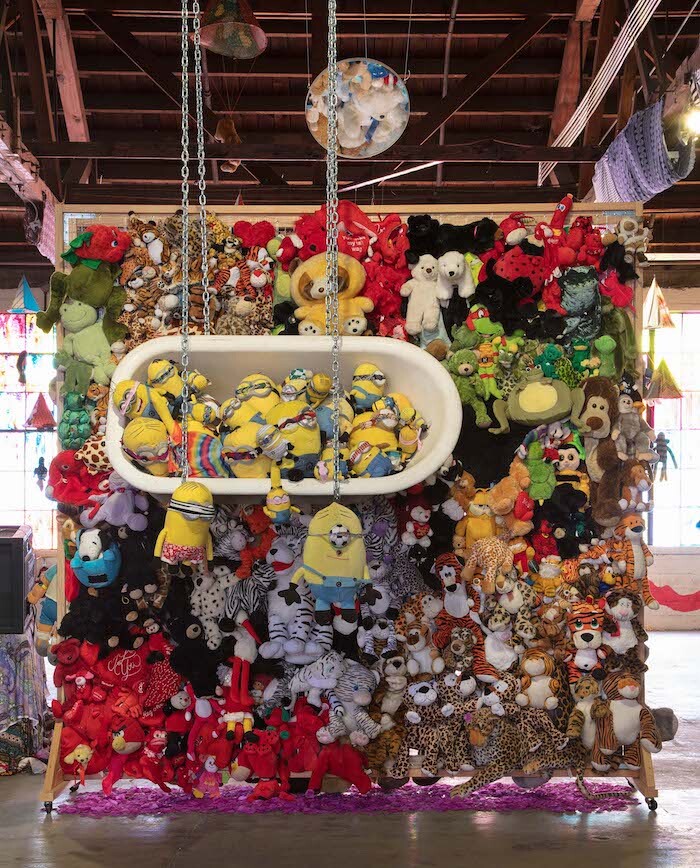Marveling over the evolution of his latest exhibition, Charlemagne Palestine remarked: “This idea or obsession that I had with a few animals at the beginning, never did I imagine that it would become such a maximal, enormous work like this. It’s the biggest ever with about 18,000 or more. That we found them quite easily and quickly. And there are hundreds of thousands more out there so it’s like some kind of social phenomena [sic].”1 The animals are stuffed, and all of them used, or used up—orphans, as inscribed in the title. Together with a variety of props and sounds, they fill the cavernous main gallery at 356 Mission, which has played host to some of the most ambitious exhibitions in Los Angeles over the past five years and which last week announced that this show would be its last. Palestine’s précis provides the key markers for navigating his mesmerizing, heavily Instagrammed, carnivalesque installation: magnitude, the bounteous resource, the obsession “at the beginning,” and some kind of social phenomenon, though what kind exactly is the question for us.
Together with orphans, two horns of plenty appear in the title, both in English and Latinate formulations, plentitude making a fine watchword for Palestine’s arrangements of all these discarded loveys. An overabundance of details coalesces in some places into chromatic patterns and elsewhere splays out in a jumble. Here animals densely cover a segment of wall, there they crowd the floor. A bathtub full of Elmos, another of Minions. There are boatloads of these things: a sailboat and a rowboat, brimming with bunnies, giraffes, and Hello Kitties. Creatures dangle from the ceiling, cling to grand pianos, and envelop a series of freestanding wood-framed structures that recall theater backdrops, breaking up the space. Colorful rags trim the beams and pillars, and a patchwork of patterned fabrics provide a hippie backdrop to the fuzzy, kaleidoscopic masses.
We are meant to take this amplitude as a rapturous iteration of the divine—produced by or producing the sense of “oceanic feeling,” coined by the French art historian and mystic Romain Rolland and popularized by Sigmund Freud. Palestine considers the animals divinities, the dressed-up space a temple. It is, however, a distinctly interfaith exercise in spiritual ecstasy: a bank of windows treated with a splotchy, colorful paint job suggests stained glass and droning music piped in from above washes through the room and bleeds together with chanting, moaning, and hollering issuing from a set of six televisions playing a selection of Palestine’s videos from the 1970s–2000s, creating a mantric cacophony. At the back of the room, a pair of disco balls bear inscriptions, as if imported from a bar mitzvah: chaim (life in Hebrew, also Palestine’s given name) and mazel tov. (The title of his exhibition at New York’s Jewish Museum last year was “Bear Mitzvah in Meshugahland”.)
That beginning of an obsession Palestine speaks of might refer to his early days as a composer and performer in New York’s Minimalist music circles, where a few stuffed animals would decorate the piano or organ on which he banged out mounting marathon repetitions. It might just as well refer to an originary trauma he has frequently recounted, where he came home from school to find that his mother had thrown away all of his teddy bears. If this vast, motley spectacle comes to us by way of a repetition compulsion, then Palestine, it seems, makes a pageant of his death drive, with coffins of various sizes punctuating the installation and overflowing with—you guessed it—stuffies.
The specter of death does indeed hang around Palestine’s delirious tableaux. With the coffins in view, you could read the whole furry frenzy as a wild danse macabre: the animals are orphans, yes, but they are also, in a sense, deceased—forsaken and forgotten. Eighteen thousand—the number of creatures amassed here, quoted again and again in all of the coverage of the exhibition—starts to sound like a statistic, distant and bleak. For it’s a fuzzy kind of deathliness that we see in the hordes of lifeless dolls, one that seems to say more about cheap and precarious life than death as such. Palestine catches a surprised glimpse of bare life—or, perhaps, bear life—in the crowds of stuffed animals, noting the unintended resemblance to the homeless encampments of LA’s Skid Row or the Calais Jungle. The source of Palestine’s impression—same as his religious exaltation—is the titular plenty, the bountiful resource, only now we should call it excess. The accidental pairing of a glut of stuffed animals with the image of vast numbers of people excluded from the most basic ways of making life and spending time under capitalism reveals something of the social dimension Palestine left unstated. Capitalism, we know, likes things askew: it produces too much stuff and not enough jobs, creates an immense accumulation of teddy bears and surplus populations. It knows the only inexhaustible resource is people.
From an interview with Chloe Ginnegar: http://356mission.tumblr.com/post/170083655670/interview-with-charlemagne-palestine-by-chloe.
